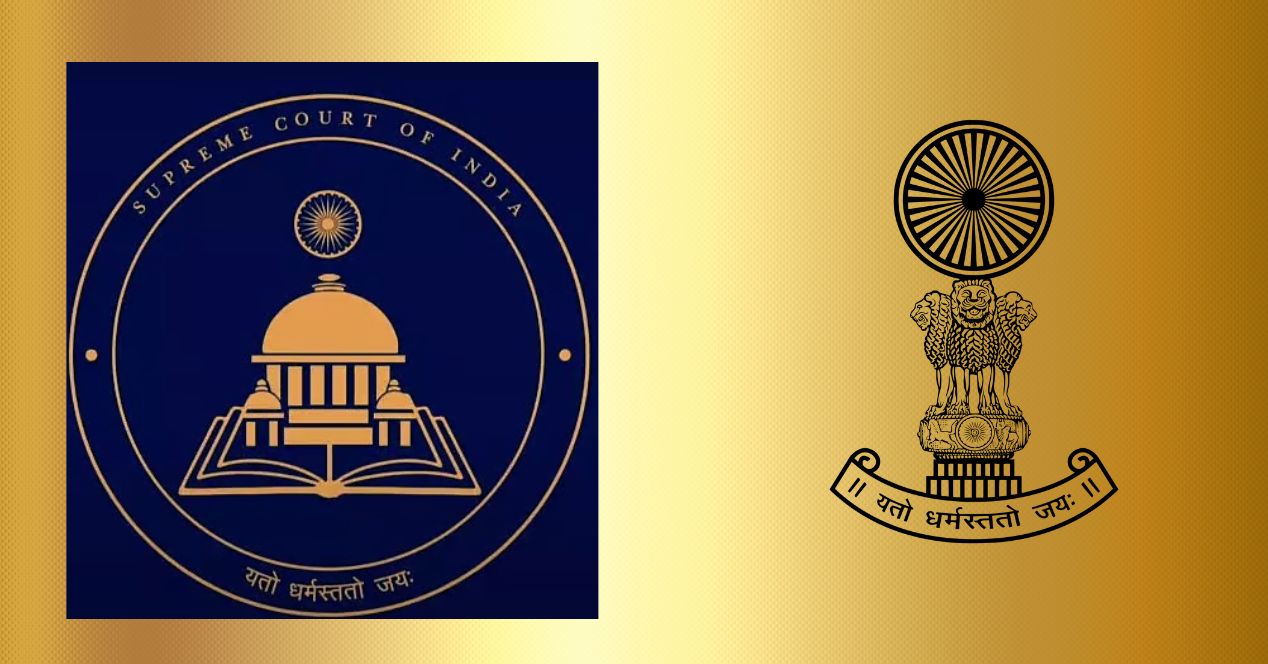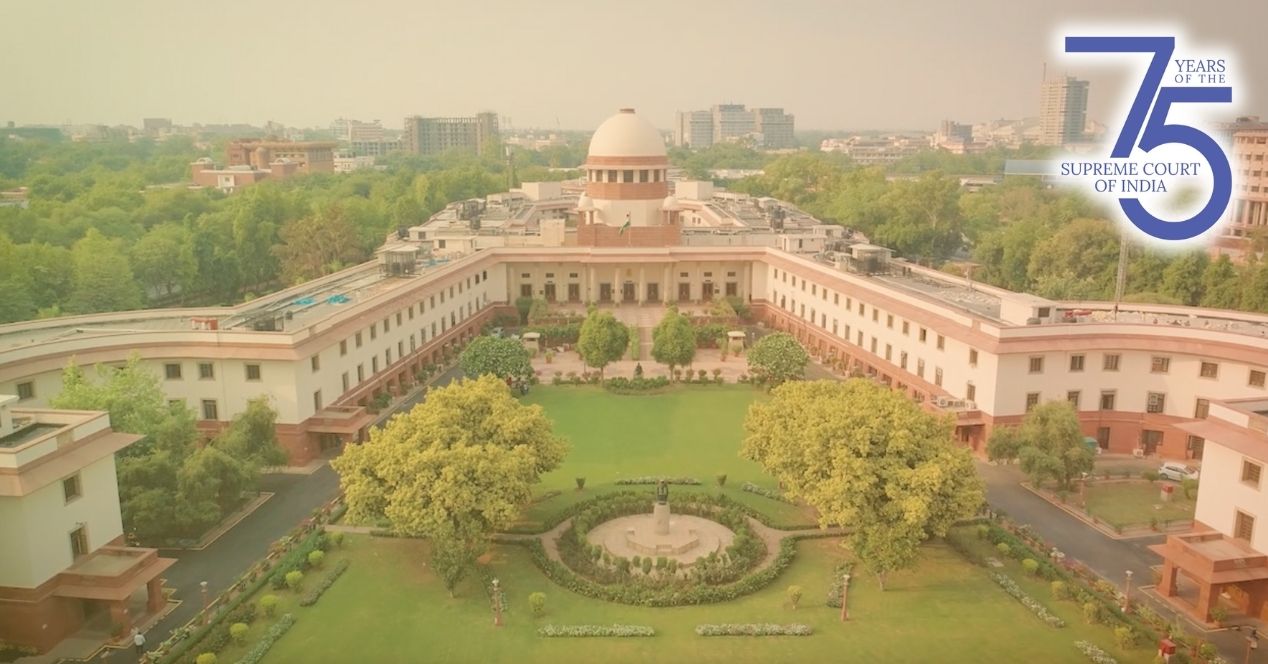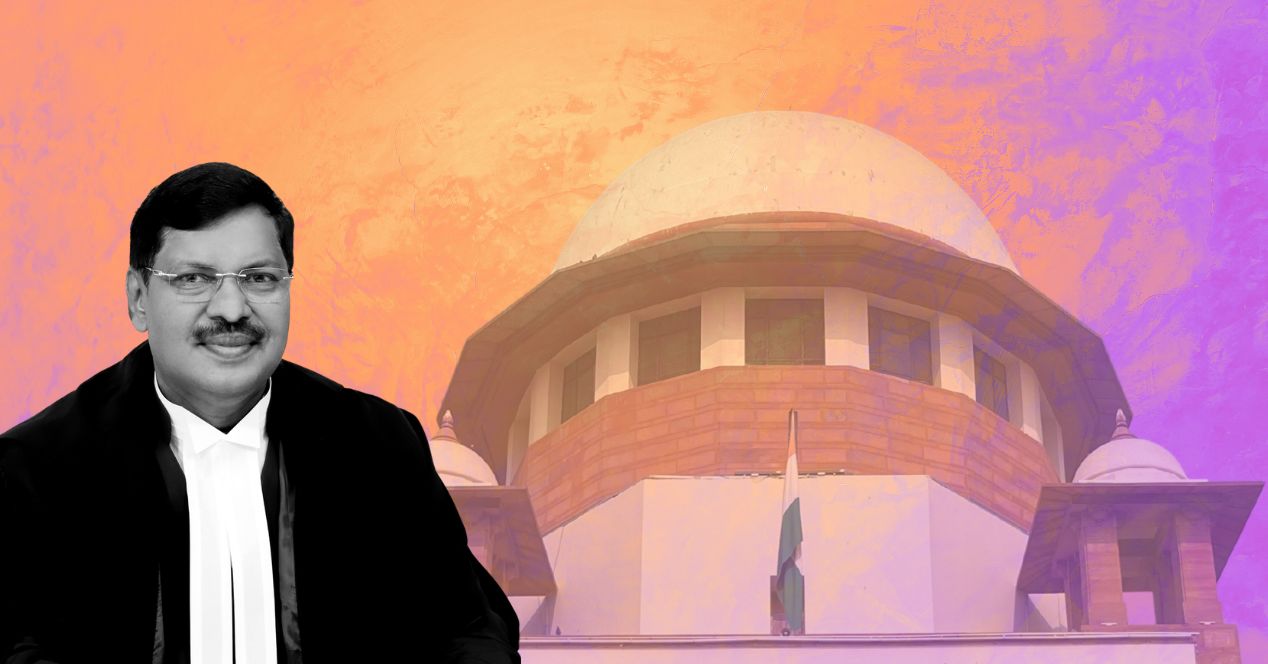Channel
The story behind the Supreme Court’s logo change
Last month, the Supreme Court reinstated its old logo with the Sarnath Lions. Does this mark a return to the Court's austere roots?
Transcript:
Hello everyone, and welcome to SCO’s channel.
I’m Spandana. Today we’re not going to be talking about a case or a tenure of a Chief justice or new appointments at the Supreme Court.
Rather, we’re going to be talking about something that signifies institutional iconography and identity.
Recently, the Supreme Court reinstated its old logo. This logo has the state emblem of India, a version of Ashoka Sarnath lions, as the centerpiece. It raised some eyebrows because it essentially does away with the new flag and insignia launched by former Chief Justice DY Chandrachud during his term in September 2024. With much fanfare and as part of the Supreme Court’s 75th anniversary celebrations, former Chief Justice Chandrachud, along with President Draupadi Murmu had unveiled the new logo. This logo was designed by the National Institute of Fashion Technology.
The seal featured a navy blue background with a golden line drawing of the Court’s iconic rotunda emerging from an open Constitution. The building was crowned by the Ashoka Chakra. This graphic was framed by a circle.
There was a lot to say about the iconography that replaced the lions in the new design launched by CJI Chandrachud. Courtroom number one, where the Chief Justice of India traditionally presides, is directly under the central dome. The chief architect of this dome was Ganesh Bhikhaj Deolalikar. Legal historian Rahela Khorakiwala has noted that the dome signifies “a sense of order amidst the diversity of the people it represents.”
But there was also much that remained unexplained. For instance, the choice of navy blue. At the time of the launch of the new flag, we had speculated that it echoed two symbols of Buddhist inspiration: One, the Ambedkarite flag, or two, the Ashoka chakra in the Indian National Flag.
In any case, the symbolism was potent, and the overall design, with its color and clean lines and circles, suggested an embrace of a burnished, contemporary identity. By returning to the monochromatic seal with its lion capital, the court under CJI Gavai seems to have taken a step back from the modernist sensibility, at least from a graphic design point of view.
This rollback was also accompanied by the reversal of another modernist intervention of the Chandrachud Court—glass partitions in the Court’s corridors. The former Chief had had them installed for better air conditioning during Delhi’s brutal summers. But several lawyers had complained that the glass partition was disruptive and antithetical to the building’s flow and openness. By directing its removal, Chief Justice Gavai appears to be returning to the roots of the Supreme Court in one more way.
CJI Gavai:
The other decision that we have taken is with regard to removal of the glass partition which was demanded by the Bar for last several months.
So I think when all of you come back after “partial working days”, I’m yet to get used to it, you will see the Supreme Court in its ’original avatar’.
Now we are wary of reading too much into cosmetic changes, but considering that administrative decisions contribute in some shape to the eventual legacies of Chief Justices, it is tempting to wonder about what it all means. Are these reversals indicative of a broader shift favoring continuity and rootedness over reinvention and experimentation?
Some colleagues I spoke to see it as a power move, a quiet assertion of authority by the new Chief Justice. Others cautioned not to read too much into it, pointing out that the 2024 logo was meant to commemorate 75 years of the Court and the Constitution and was not intended to be permanent. A third possibility is, of course, that it’s simply a return to a symbol that is more widely recognised by the public. But there’s also the personality centric aspect of institutional reforms to consider. Justice Oka recently remarked that the Court cannot be CJI-centric and emphasised the need for restraint in how the judiciary represents itself.
Political theorist Max Lerner has argued that courts survive through the legitimacy they derive in the ‘psychological realm.’ In this context, CJI Chandrachud’s redesign seem to imagine a Court that draws legitimacy from a modern, accessible constitutionalism. CJI Gavai’s early moves and utterances may suggest that the Court’s authority is grounded in its austere roots.
In the grand scheme of institutional continuity, symbols and refits may count for much less than listing shakeups and landmark judgments. But for now, the fact is that the Court’s logo is cloaked in monochrome once again. It’s perhaps for future observers of the Court to decide whether this was radical, reactionary, or simply reflective.
What do you think about the old logo and the new? Let us know in the comments below. As always, stay tuned to scobserver.in for more interesting stories from the Supreme Court of India.
Thank you for watching!




